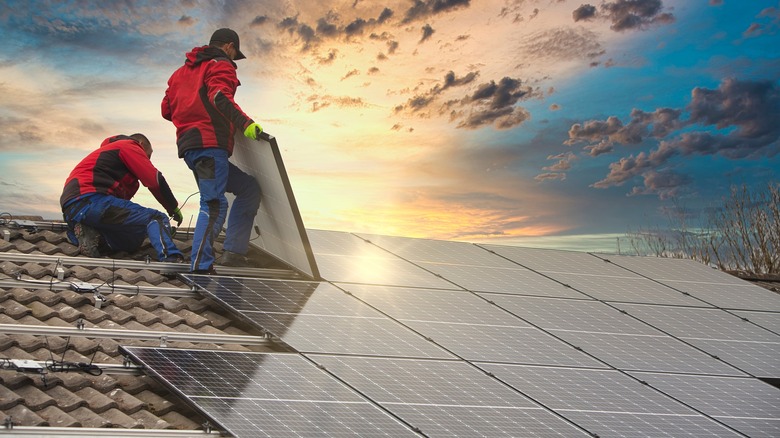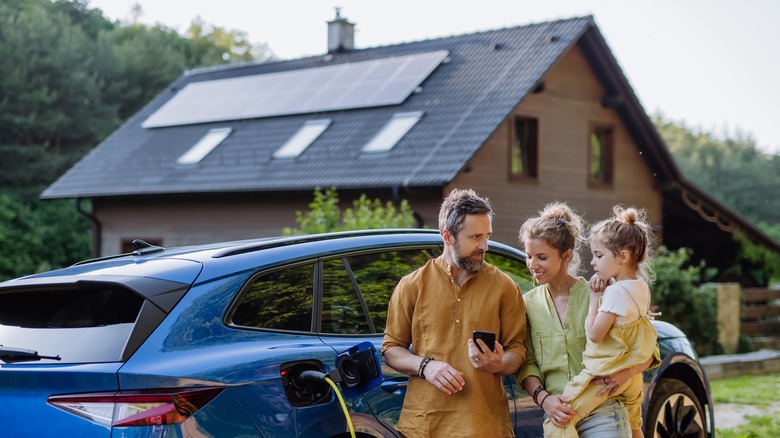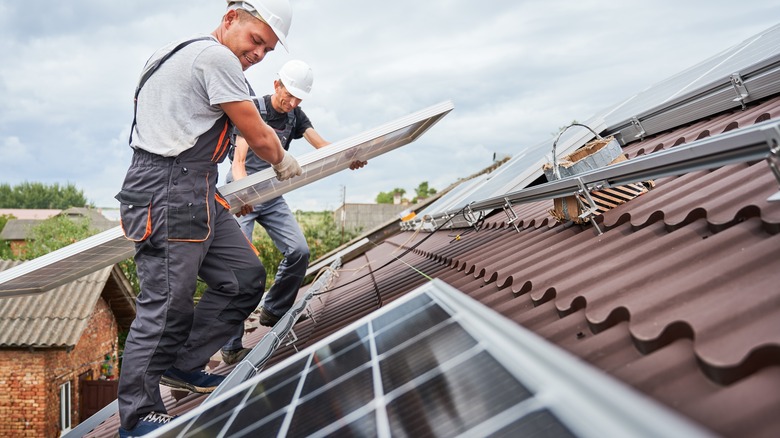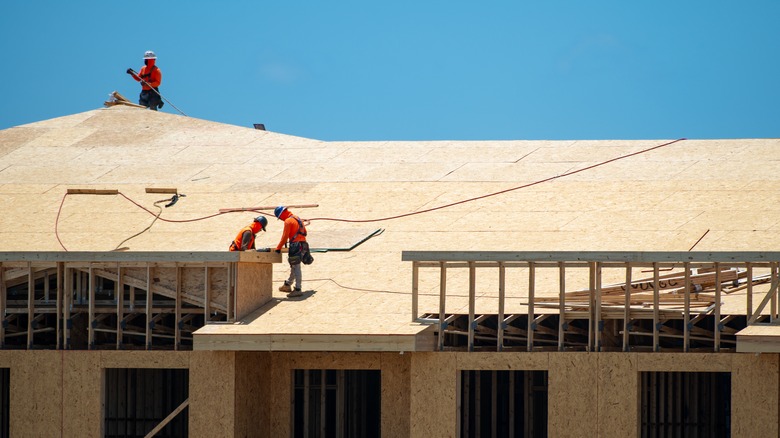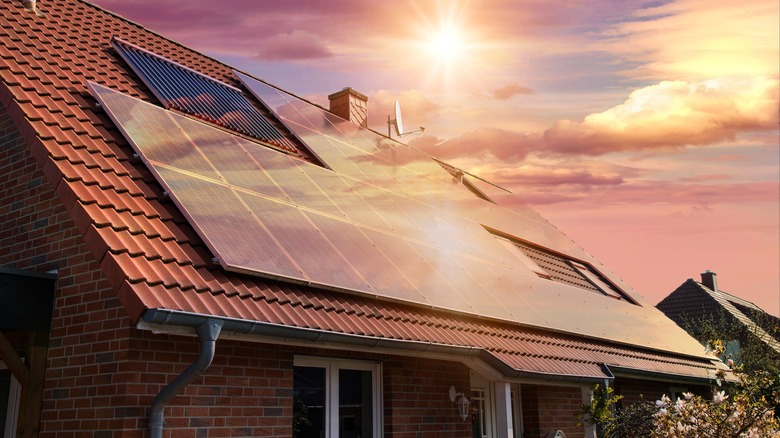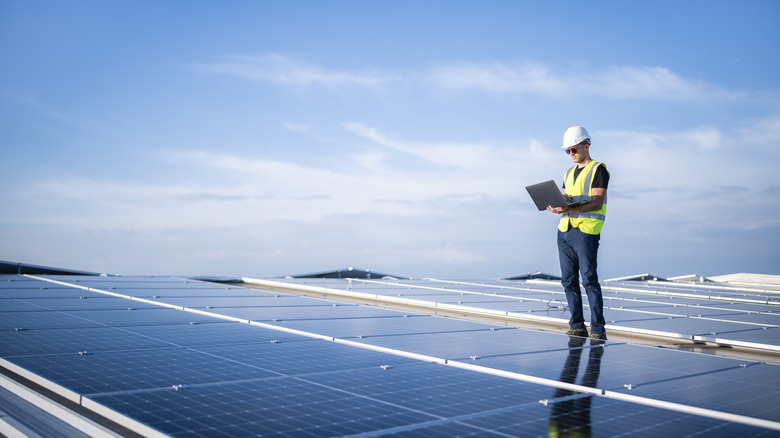Is Your Roof Suitable For Solar Panels? A Quick Guide
With electricity bills hitting sky-high levels, the thought of switching to solar energy is more tempting than ever. Solar panels can help cut down your energy costs (despite the hidden solar costs) and are good for the planet too. However, before you make a decision, it's important to check if your roof is ready for this eco-friendly upgrade. Not all roofs are fit for solar panels, and there are a few important things to look at to make sure you're making the right choice.
For instance, the way your roof faces and its slope can make a big difference in how well solar panels work. You also need to think about what your roof is made of and its condition – these factors can influence how the panels are installed and how well they'll perform. Plus, your roof needs enough clear space to fit the panels. In addition to these practical considerations, local regulations and potential restrictions could also play a part in your decision-making process.
Roof orientation and angle
When considering the installation of solar panels on your roof, the first thing you should do is understand the significance of your roof's orientation and angle. Let's start with orientation. This refers to the direction that your roof faces, which can significantly affect how much sunlight your solar panels receive. There is no one-size-fits-all approach here, as it largely depends on where you are located. For instance, in the northern hemisphere, a south-facing roof is considered the gold standard for solar panel installations because it receives a sufficient amount of sunlight.
If you don't have a south-facing orientation, west or east-facing orientations are the next best alternatives. While they might not capture as much sunlight as a south-facing roof, they still provide substantial exposure, especially during peak sunlight hours in the morning and late afternoon. Next, the pitch or angle of your roof plays a crucial role as well. This aspect refers to how steep your roof is in comparison to the flat ground. Ideally, the pitch for installing solar panels should closely align with your geographical latitude, adjusted by 15 degrees either way (addition in winter and subtraction in summer). So for instance, if your location is at a 35-degree latitude, the perfect pitch for your roof would fall within the 20 to 50-degree range. This ensures that your solar panels receive optimal sunlight exposure throughout the year.
However, if your roof's pitch is not within the optimal range, don't worry. Solar panels can still be installed on roofs with less-than-ideal angles through the use of mounting systems that adjust the tilt of the panels.
Roof material and condition
The material of your roof should also be compatible with solar panels to provide them the support and durability they need. Common roofing materials like asphalt shingles, metal (with standing seams), and concrete tiles are generally compatible with solar panels. On the other hand, if your roof is made of wood shakes or slate tiles, you might face some challenges. These materials are fragile and can complicate the installation process. They might also require special mounting equipment which will increase your overall costs.
Similarly, the condition of your roof is equally important. You must make sure your roof is robust and ready to bear the extra weight of solar panels. If your roof is old or showing significant signs of damage, it might be smart to fix or replace it before adding solar panels. The idea here is simple: a robust, well-maintained roof is the best foundation for your solar panels. This will make sure that your solar system is secure and effective in converting sunlight into energy. If you're unsure about the suitability of your roof material or its condition, consulting with a professional can provide clarity.
Roof size and space
The size of your roof directly affects how many solar panels can be installed, which in turn influences the amount of electricity that can be generated. A larger roof surface offers more potential for solar panel installation, allowing for a bigger system that can generate more power. However, in case, you don't need a lot of solar energy or are just using more efficient panels, then a smaller roof may be fine as well.
Remember, it's not just about the total area; the usable space on your roof also matters. If you have chimneys, skylights, or vents on your roof, there is a chance they will reduce the area available for solar panels. Solar panels should also be installed where they can remain unshaded for the majority of the day. Trees, neighboring buildings, or other structures casting shadows can limit the effectiveness of your solar panels (more on this below).
To calculate the space needed for your energy, you must understand your household's average electricity consumption and compare it with the potential output of solar panels. This, however, will also depend on the efficiency of the solar panels you choose. If you find your roof might be on the smaller side, you might want to consider high-efficiency panels that can produce more electricity in less space.
Shading and environmental factors
Shading can also affect how your solar panels work. Shadows cast by trees, nearby buildings, or other structures can reduce the amount of sunlight your panels receive, thereby decreasing the overall energy they generate. Make sure you keep an eye on the shading on your roof throughout the day as the sun's position changes. Sometimes, trimming trees or adjusting the placement of panels can also help.
Environmental factors also play a role in the performance of your solar panels. Since solar panels rely on sunlight completely, regions with high amounts of sunlight naturally will be always better for solar energy production. Solar panels can produce electricity in less sunny areas, just at a reduced efficiency. Other environmental considerations include snow, wind, and salt (for coastal areas). Panels are generally designed to withstand these conditions, but if you reside in an area with extreme weather conditions, you might want to consider additional durability features. Depending on where you live, you might also need to clean your solar panels regularly.
Professional assessment
A professional solar installer can conduct a detailed analysis of your roof's orientation, angle, material, condition, size, and the potential impact of shading and environmental factors. They can also help optimize the installation process by recommending the best type of solar panels for your roof, suggesting adjustments to overcome shading issues, or even advising on roof repairs or modifications before installation.
In some cases, professional installers can navigate the local regulations and restrictions for you as well. Many areas have specific guidelines regarding the installation of solar panels, which may include permits, installation standards, or restrictions on where or how panels can be mounted. Additionally, if you're part of a homeowners' association (HOA), there may be additional rules to follow regarding the appearance and placement of solar panels. homeowners' association rules, and any other regulatory requirements. Some installation companies can handle the paperwork and permits needed for your project, removing a significant burden from your shoulders.
You will also get a clearer picture of the costs, savings, and return on investment for your solar project. They can help you understand the financial incentives available in your area, such as tax credits, rebates, and solar renewable energy certificates (SRECs), and how these can benefit you financially.
